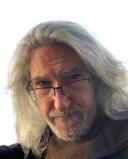Religion
Does Religion Get You High?
Maybe religion is the opiate of the masses. But not how you think.
Updated January 31, 2024 Reviewed by Tyler Woods
Karl Marx once said religion is the opiate of the masses. His metaphor may have a whiff of literal truth, even if it was intended as a hostile attack on religion from an atheistic perspective. It may be worth considering the possibility that religion does indeed work like a drug for some people, and that religious life does have a drugging effect in American lives.

Before tackling the particularities of religious drug life, it is important to recognize the fact that psychoactive drugs have been and continue to be an integral part of many religious communities. Whether we are talking about wine and Christians, cannabis and Rastafarianism, Hinduism and the mysterious soma, coffee and Sufi mysticism, or peyote and the Native American Church, to name only a few examples, the evidence for deeply rooted links between sacred rituals, personal spirituality, drug consumption, and the communal bonds they engender is glaring.
The integration of drug use into religious life is only one side of the coin though, and obvious to most. The other side of the coin, the way religious life itself has a drugging effect for believers, is less obvious and certainly more controversial. And while the immediate assumption might be that I am attacking religion as a delusion or something that isn’t real, à la Marx, that is not at all my position. Religious sensibilities and sentiments are some of the most real and powerful forces in human history and social life, and like drugs, they can lead to elation and euphoria, order and stability, and addiction and human destruction.
As far-fetched as it might sound, the sacred has been providing a fix for humans throughout history, leading to powerful altered states of consciousness that establish compelling inner and outer realities, and that change behaviors, social relations, and self-understanding. The common ground between a drug-filled life and a religiously full life may be a bit shocking, but it is also a reminder that religion isn't always what it is cracked up to be, and drugs may be more fundamental to human life than we care to admit.
Here are a few ways drug life and religious life overlap:
Brains Don't Lie
Let's get biological and see what science can tell us about drugs and religion. The brain is complex, and any attempt to reduce the complexities of human life to regulations of neurotransmitters and activation of certain regions of the organ is only one piece of a larger puzzle. But the neurosciences are on a roll, and inform us more and more about the brain's role in all aspects of human experience.
Relevant here is one study from 2016 by a team of neuroscientists at the University of Utah who used brain imaging technologies to try to understand how the brain processes religious sensations and feelings with 19 active members of the Latter Day Saints. This study, and others tied to the neurotheology wing of scientific inquiry, seem to suggest that at some basic level, spiritual experiences activate the brain's reward circuits which are linked to feelings of pleasure in other activities, like listening to music, having sex, being in love, and taking certain drugs.
The studies, focusing on the neurotransmitter dopamine and the nucleus accumbens, among other elements in the brain, detect a complex pattern of neural networks at work in religious experience. At this point findings are all quite tentative, but they do point to some neurologically similar patterns between the impact of some psychoactive substances and certain religious activities and forms of spiritual thinking.
Existential Coping
Where does one turn when in the grips of existential crisis and anguished suffering? Both drugs and religion offer a means to modify consciousnesses and experiences of reality in powerfully potent ways that provide a salve for coping with, if not overcoming, crisis and suffering. Religious teachings can drug believers into new levels of awareness—regarding detachment for Buddhists, for example, or original sin for Catholics—that alter and explain these experiences for those consuming the teachings. When times are hardest and the most challenging, whether in terms of grief, depression, anxiety, trauma, or physical pain, religious consciousness can lead to a way of escaping from present miserable circumstances and discovering the things that really matter, putting the experiences of the body in proper light.
More than simply an escape from reality, some psychoactive drugs actually produce flights of euphoria and transcendence that blow through the doors of perception limited to the material world and transport individuals into other worlds beyond this one. This is familiar terrain in the history of religions, a thread that is more than just mystical proclivities in the world’s religious traditions. Extraordinary religious experiences that bring a person outside of themselves, that offer a brief taste of life beyond the boundaries of our bodies and the natural world, whether tied to divinities or ancestors or the Ultimate or ego death, are consciousness-altering, often life-altering, and can be quite intoxicating.
Religious life, of course, is not all spiritually infused forms of intoxication and mystical flights of fancy. It is also a source of stability and order in an often chaotic and random universe. The drugging effects of religious consciousness allow for avenues of transcendence, but also ensures and maintains ordinary, everyday life. Rather than take a prescription pill (or maybe, in addition to taking one), daily prayer or meditation modifies ritual structures and mental outlooks in subtle ways that can provide sacred constancy and steadiness.
Dangers and Addictions
Can religious life become addictive, lead to extreme forms of psychotic breaks, and even inspire irrational acts of violence to others, and oneself? We have seen these themes in the narratives around drug use and its dangers to social order and stability. But these are also features of human religious history, which is full of episodes that might be described as overdosing on religious commitments. Religious extremism is certainly a potent consciousness-altering phenomenon that has changed the course of history in many eras and cultures.
The past is one frame in which to contemplate these connections and overlaps, and the present frame only reinforces them. Rather than play with phrases like “swallowing the Kool-Aid” or get hung up on what constitutes a “cult,” our contemporary world is full of religious addicts, like addicts of many contemporary behaviors and substances, whose toleration levels shrink while their drive and motivation to consume more spiritual fuel only intensifies. The potential for religious addicts to engage in extremely hazardous and harmful activities and wreak havoc socially is a real and present danger.
Forget Marx and his famous phrase (though it certainly worked for him). It may be time to take the drugging effects of religious life seriously, and continue to find a new language to talk about religiousness in our lives. We are certainly entering a new era in our relationship with and dependence on psychoactive substances, which also will require new perspectives on the ubiquity of drugs in social as well as psychological life. The parallels, and overlaps, between religion and drugs today, so common through human history, will only become clearer in the future.




